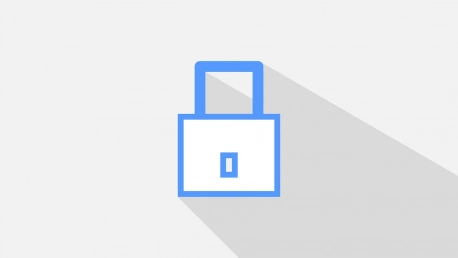Cybersecurity is crucial in safeguarding our digital lives. It employs three key strategies essential for the defense against cyber threats: Authentication, Authorization, and Encryption. Authentication verifies a user’s identity, ensuring that only legitimate users gain system access. Authorization goes a step further, defining access levels to ensure users can only interact with data they’re permitted to. Meanwhile, Encryption scrambles data, making it unreadable to unauthorized viewers. These concepts are the backbone of data protection, each playing a critical role in preserving privacy and security in the digital realm. Their implementation is vital for both individuals and organizations to protect sensitive information against cyberattacks. Understanding and applying these security measures helps maintain the confidentiality, integrity, and availability of data, which is paramount in an age where information is a valuable commodity.
Authentication: Confirming Identities
Passwords and Biometrics
In the digital realm, authentication is the process of verifying who you are before allowing access to sensitive data or systems. Traditionally, this is done via a password, a secret that should be known only to the individual and the system they’re accessing. A robust password can act as a strong initial barrier to thwart unauthorized entries. Yet, as cyber threats evolve in complexity, relying solely on passwords is increasingly insufficient. This vulnerability has given rise to the adoption of biometric authentication methods that utilize distinct physiological traits for identity verification. Examples of such traits include fingerprint patterns, facial features, or the unique patterns in one’s iris. These biometric identifiers are inherently personal, making them far more challenging to duplicate than traditional passwords. By integrating biometrics, security is considerably enhanced, combining something you know (password) with something you are (biometric data) to ensure safer access protocols in our ever-more digital world. This dual-layer security mechanism significantly mitigates the risk of unauthorized access and is becoming a standard in safeguarding digital assets and private information.
Two-Factor and Multi-Factor Authentication
The continuous evolution of cyber threats has made it clear that traditional password-based security isn’t enough. This has led to the widespread adoption of two-factor authentication (2FA), which bolsters protection by adding a second layer of security. Typically, in addition to the usual password, 2FA requires users to verify their identity using something they possess, like their smartphone or a special security token.Expanding on this method, multi-factor authentication (MFA) introduces even more safeguards. MFA may include biometric verification such as fingerprints or facial recognition, as well as an analysis of behavioral patterns. This way, even if a hacker manages to figure out a user’s password, they would still face the daunting task of breaching the additional security layers set by MFA. Thus, while not infallible, implementing 2FA or MFA can significantly increase the difficulty for potential intruders to access sensitive data or systems, making it a critical component in modern cybersecurity practices.
Authorization: Determining Access
Access Levels and Permissions
After a user or system is successfully authenticated, they must undergo authorization, which determines their permissible actions. This step is pivotal as it sets boundaries on an entity’s access to data or capabilities within a system. For example, in a workplace, it delineates who can view or manipulate certain resources – an average worker might access a shared network drive, but not the sensitive financial databases, which are reserved strictly for qualified personnel. To enforce these boundaries, digital systems employ intricate configurations and policy frameworks. These are essential in maintaining the security and privacy of confidential information. Proper authorization ensures that only the right people have the right access at the right times, thereby safeguarding an organization’s critical assets against unauthorized use or exposure.
Role-Based Access Control
Role-Based Access Control (RBAC) is a system that organizations adopt to manage user privileges and enhance security measures efficiently. Instead of individual user allocation, RBAC ties permissions to specific roles within the organization. This practice is premised on the fact that roles are relatively stable even though employees may shift positions with some frequency. For instance, those assigned the “manager” role have the clearance to sign off on expense reports, a privilege not extended to the “staff” role. Once users log in, the system recognizes their roles and grants access rights accordingly. This streamlined approach to assigning and managing permissions helps maintain a consistent application of the company’s security protocols and simplifies the overall process of access control. RBAC is seen as a scalable and flexible solution, aligning well with the dynamic nature of job responsibilities and is particularly effective in larger organizations where user management can otherwise be complex and unwieldy.
Encryption: Protecting Data
Data Encryption Fundamentals
Encryption in cybersecurity is akin to a private, soundproofed room that only authorized people can look into. This process takes legible data and, via algorithms and keys, turns it into confused gibberish called ciphertext. This ensures that if data does fall into the wrong hands while it’s being transmitted over the internet, it remains undecipherable to any party lacking the correct decryption key. The vitality of encryption cannot be overstated, especially when it comes to the transmission of delicate information through the vast and vulnerable cyberspace. A prime example of encryption at work is the HTTPS protocol, which sets up a secure communication channel even over an insecure network. This protocol ensures that our personal and financial information remains confidential when making online transactions or sending sensitive data. Essentially, encryption is the digital world’s lock and key, guarding our virtual conversations and information against unauthorized access and ensuring privacy in an increasingly interconnected world.
Encryption in Transit and At Rest
Encryption is crucial not only while data is being sent but also when it is stored, known as encryption at rest. This form of encryption safeguards data on physical devices like hard drives or cloud services from being read by unauthorized parties. Various encryption methodologies, like AES (Advanced Encryption Standard) and TLS (Transport Layer Security), provide different levels of safeguarding to cater to various requirements. AES is often used for encrypting data at rest, providing a robust standard recognized worldwide, while TLS is commonly employed for securing data in transit, such as during internet communications. Implementing these encryption strategies is vital to ensure the confidentiality of data both when it’s transmitted across networks and when it lies dormant, awaiting future access. This dual approach to data protection—securing data in motion and at rest—ensures a comprehensive defensive mechanism against potential cyber threats and unauthorized data breaches. Effective encryption is a fundamental aspect of data security strategy in today’s digital landscape.









